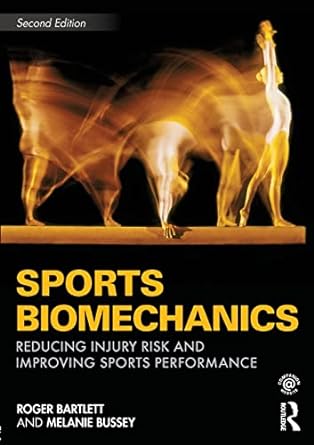When it comes to working with athletes, whether male or female, sports biomechanists face the challenge of balancing two key objectives: reducing the risk of injuries and enhancing sports performance. In the updated edition of Sports Biomechanics Reducing Injury Risk and Improving Performance (9780415558389), readers are introduced to the foundational principles that form the basis of understanding the biomechanics of both sports injuries and performance improvement. This book explains how modern biomechanical science can be leveraged to achieve these dual objectives effectively.
The initial chapters of the book delve into the realm of sports injuries, exploring topics such as the properties of biological materials, mechanisms of injury occurrence, risk mitigation strategies, and the estimation of forces acting on biological structures. On the other hand, the later chapters focus on utilizing biomechanics to enhance sports performance. This includes analytical techniques, statistical and mathematical modeling of sports activities, and the implementation of feedback mechanisms to optimize athletic performance.
By incorporating the latest empirical and epidemiological data, each chapter provides clear and concise summaries, self-assessment questions, and recommendations for further readings. This book is a valuable resource for advanced undergraduate and postgraduate students interested in biomechanics, sports injuries, sports medicine, physical therapy, or performance analysis.
FAQs (Frequently Asked Questions)
1. What is sports biomechanics?
Sports biomechanics is the study of the mechanical aspects of human movement during athletic activities. It involves analyzing how forces and motion impact the body to improve performance and reduce the risk of injuries.
2. How can sports biomechanics help in reducing injury risk?
By understanding the biomechanics of specific movements or techniques, sports biomechanists can identify risky mechanics that may lead to injuries. They can then provide recommendations to modify these movements to minimize the risk of injuries.
3. How does sports biomechanics contribute to enhancing sports performance?
Through techniques like motion analysis, force measurements, and equipment optimization, sports biomechanics can help athletes optimize their movements, enhance efficiency, and maximize performance output.
Conclusion
As athletes strive to push their limits and achieve peak performance, the role of sports biomechanics becomes increasingly crucial. By understanding the underlying biomechanical principles, athletes, coaches, and sports professionals can work towards minimizing injury risks and unlocking the full potential of athletic performance. Sports Biomechanics Reducing Injury Risk and Improving Performance (9780415558389) serves as a comprehensive guide for individuals looking to delve deeper into the intersection of biomechanics, sports injuries, and performance enhancement.










Be the first to review “Sports Biomechanics Reducing Injury Risk and Improving Performance (9780415558389)-Test Bank”